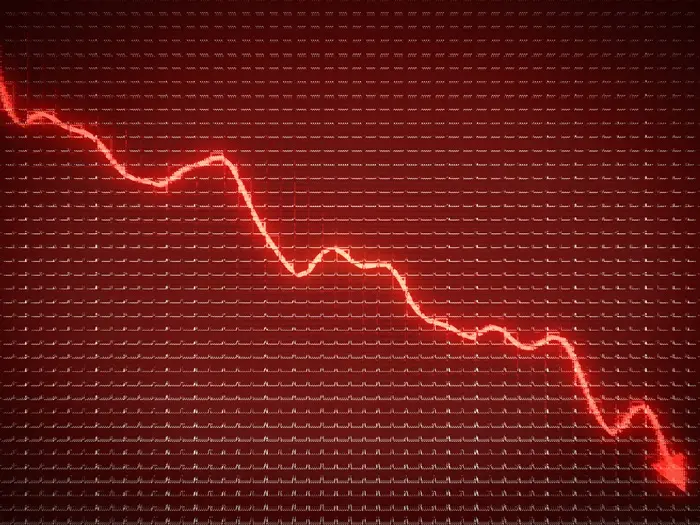In the world of stock trading, understanding market patterns is crucial to making informed investment decisions. One of the patterns that traders often look for is the inside day. The inside day is a simple but powerful technical formation that provides insight into market consolidation and potential price action. This pattern can signal a pause in the current trend, a potential breakout, or even a reversal. But what exactly does an inside day mean in stocks, and how can you use it to your advantage?
In this article, we will explore what an inside day is, how to identify it, its significance in stock trading, and the various ways traders can incorporate it into their strategies. By the end, you will have a solid understanding of the inside day pattern and how it can impact your stock trading decisions.
What Is an Inside Day in Stocks?
An inside day is a candlestick pattern that occurs when the price range of a given day (the high and low) is completely within the range of the previous day. In simpler terms, the high of the current day is lower than or equal to the high of the previous day, and the low of the current day is higher than or equal to the low of the previous day. This results in a smaller trading range compared to the prior day, indicating a period of consolidation or indecision in the market.
Key Characteristics of an Inside Day
The inside day pattern is defined by the following characteristics:
Current Day’s Range: The price range (difference between the high and low) of the current day is smaller than the range of the previous day.
Enclosed Within Previous Day’s Range: The current day’s high and low are contained within the high and low of the previous day.
Indecision: The pattern signals that neither buyers nor sellers are able to gain control, and the market is in a state of indecision or consolidation.
Inside days are often seen as a sign of equilibrium in the market, where the price is stabilizing after a period of strong movement. However, this period of calm can also serve as a precursor to future price action, including breakouts or reversals.
How to Identify an Inside Day
Identifying an inside day on a candlestick chart is relatively simple once you understand its core characteristics. Here’s how you can spot an inside day:
1. Look for Two Consecutive Candlesticks
To spot an inside day, you need to observe two consecutive candlesticks. The first candlestick should have a larger price range, while the second candlestick (the inside day) should have a smaller price range. Specifically:
The high of the inside day should be lower than or equal to the high of the previous day.
The low of the inside day should be higher than or equal to the low of the previous day.
2. Compare Highs and Lows
Compare the highs and lows of the two candlesticks. If the current day’s price action is entirely contained within the previous day’s price action, then you have an inside day. The inside day candlestick will appear “inside” the previous day’s candlestick.
3. Look for Confirmation
An inside day by itself does not guarantee a breakout or reversal. For confirmation, traders usually look for a breakout in the direction of the trend after the inside day. This could be a break above the high of the inside day or below the low, signaling that the market is ready to move in that direction.
4. Volume Considerations
While volume is not always essential, many traders look for volume patterns to confirm the significance of an inside day. A high-volume breakout after an inside day can indicate strong market interest in the direction of the breakout. Conversely, low volume during the formation of the inside day might suggest a lack of conviction, reducing the significance of the pattern.
Why Does an Inside Day Occur?
An inside day often occurs after a period of strong price movement, either upward or downward. It represents a period of consolidation where market participants are taking a breather before the next significant move. There are several reasons why an inside day may form:
1. Market Consolidation
After a significant price movement, the market may enter a phase of consolidation. During this time, the price moves within a narrow range, with neither bulls nor bears gaining dominance. This results in the formation of an inside day, indicating that the market is in a state of equilibrium.
2. Indecision
An inside day may also form when traders are uncertain about the direction of the market. This could be due to a lack of new information, uncertainty about economic conditions, or a temporary pause in the overall trend. The inside day represents a tug-of-war between buyers and sellers, with neither side able to establish a clear advantage.
3. Awaiting News or Events
In some cases, an inside day forms when traders are waiting for news or events that could influence the price action. For example, an earnings report, economic data release, or geopolitical event may be expected, and the market might pause as traders await these developments. The inside day serves as a temporary pause before a potential breakout in either direction.
What Does an Inside Day Mean for Stock Traders?
For stock traders, the inside day pattern can have several implications. It is often seen as a sign of consolidation or indecision, which may precede significant price movement. However, understanding the context in which an inside day forms is critical for interpreting its meaning.
1. Potential for a Breakout
One of the most common interpretations of an inside day is that it signals a potential breakout. After the market consolidates within a narrow range, it may be ready to make a larger move. Traders often look for a breakout above the high or below the low of the inside day as a signal that the market is about to resume its trend.
For example:
Bullish Breakout: If the stock price breaks above the high of the inside day, it could signal that the uptrend is resuming, and the stock may continue to rise.
Bearish Breakdown: If the stock price breaks below the low of the inside day, it could signal a bearish reversal, and the stock may begin to fall.
2. Signal of Market Indecision
An inside day can also indicate indecision in the market. When the stock price fails to move outside the range of the previous day, it suggests that there is a balance between buyers and sellers. This can be a sign that the market is waiting for new information before making its next move. Traders may choose to wait for a clear direction before entering a trade.
3. Continuation or Reversal Patterns
The interpretation of an inside day depends on the market’s broader trend. If an inside day forms within an established uptrend, it may indicate a brief pause before the uptrend continues. On the other hand, if the inside day appears after a downtrend, it could signal a potential reversal or the beginning of a bullish trend.
4. Short-Term Trading Opportunity
Inside days can also present short-term trading opportunities. Since the pattern indicates a period of consolidation, it may be followed by a sharp price movement once the consolidation phase ends. Traders may use technical indicators such as breakouts, volume analysis, and momentum indicators to identify potential entry points after the inside day.
How to Trade an Inside Day
Trading based on the inside day pattern requires patience and careful observation. While the inside day itself may not indicate a definitive trend, it can provide valuable clues about future price action. Here are some key strategies to consider when trading an inside day:
1. Wait for a Breakout
The most common strategy for trading an inside day is to wait for a breakout. Traders will typically place buy orders above the high of the inside day and sell orders below the low. This ensures that they enter the market once the price starts moving decisively in one direction.
2. Set Stop-Loss Orders
To manage risk, traders often set stop-loss orders below the low of the inside day (for long positions) or above the high of the inside day (for short positions). This ensures that they exit the trade if the price moves against them, limiting potential losses.
3. Confirm with Other Technical Indicators
While the inside day is a powerful pattern, it is best to confirm it with other technical indicators. For example, you could use moving averages, relative strength index (RSI), or MACD to help confirm the direction of the breakout. Volume analysis is also crucial; a high-volume breakout after an inside day is typically more reliable than one with low volume.
4. Monitor Price Action for Patterns
Price action following the inside day is important to monitor. If the price breaks out in the direction of the existing trend, it may signal that the trend will continue. Conversely, if the breakout leads to a reversal, this could indicate a change in the market’s direction.
Limitations of the Inside Day Pattern
While the inside day pattern can provide useful insights, it is not foolproof. There are some limitations to be aware of when trading with this pattern:
1. False Breakouts
The inside day often precedes a breakout, but not all breakouts are successful. Sometimes, the price may break above or below the range of the inside day, only to reverse direction shortly thereafter. Traders should be cautious of false breakouts and use proper risk management strategies.
2. Limited Predictive Power
The inside day is not always a reliable predictor of future price movement. In some cases, the market may remain range-bound or continue to consolidate after the inside day, leading to a lack of significant movement.
3. Dependence on Context
The significance of the inside day depends heavily on the context in which it forms. A single inside day may not be enough to make a trading decision, so it’s essential to consider the broader market trend and other technical indicators.
Conclusion
An inside day is a simple but powerful technical pattern that indicates a period of consolidation or indecision in the market. It often serves as a precursor to a breakout or reversal and can provide valuable clues for traders looking to anticipate future price movements. By understanding how to identify and interpret the inside day pattern, traders can enhance their technical analysis and improve their chances of success in the stock market.
However, as with any technical pattern, it is important to remember that no pattern is infallible. Always confirm the pattern with other indicators and use sound risk management practices to protect your investments. With careful observation and a disciplined approach, the inside day can be a useful tool in your trading strategy.
Related topics:

































